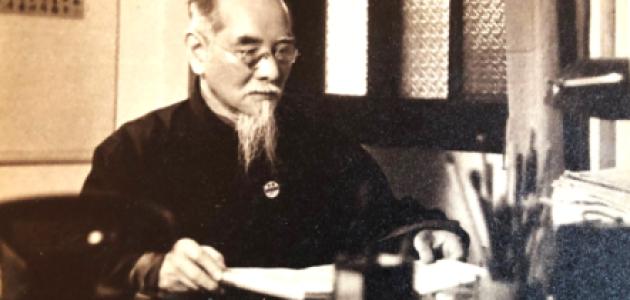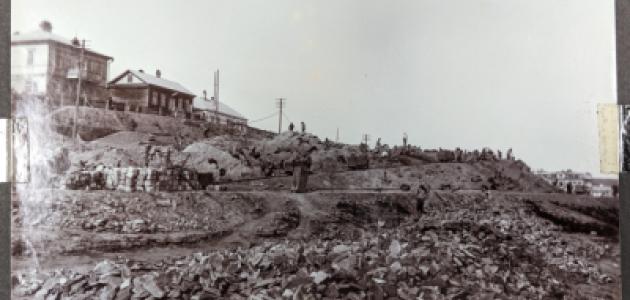-with-Oskar-Lange-1943.jpg)
Hoover Institution Archives contain rich holdings on modern Poland, especially from the period of World War II era. Most of that material emanated from the government and military institutions of the Polish government in exile, one of the original members of the anti-Nazi coalition. One sad irony of the war, begun in defense of Polish independence, was its outcome: a wholesale betrayal of the Polish ally by the West, and the recognition of a Soviet-dominated regime in Poland. One major figure of that regime, selected personally by Stalin, was Zygmunt Berling, whose collection of personal papers is now available in the Hoover Archives.
Well-educated and ambitious, Zygmunt Berling was a decorated veteran of the Polish war of independence and the Polish-Bolshevik war of 1920. His promising military career was, however, derailed due to a scandalous divorce, followed by conflicts with his superiors, all of which led to Berling’s early retirement in 1939 with the rank of lieutenant colonel. When Nazi Germany and the Soviet Union attacked Poland in September 1939 Berling was in Eastern Poland, which was soon occupied by the Red Army. He was arrested and sent to Starobielsk, one of the NKVD camps for Polish officers, where he soon let his captors know that he was a “democrat” and a “realist” and was thus more than willing to do their bidding. Along with a small group of like-minded prisoners, Berling was moved to another NKVD camp, shortly before the Katyn Forest Massacre in the spring of 1940 in which some twenty-two thousand Polish prisoners were murdered. When the Nazis attacked the USSR in mid-1941, Stalin’s Russia quickly established relations with the Polish government in exile and allowed Polish divisions to form on Soviet soil. At that time, Berling was released from confinement and sent to participate in the project. His role however, seemed to be more to sabotage than to assist the Polish commander, General Wladyslaw Anders. When Anders’s army was evacuated from the USSR to join the British forces in the Mediterranean, Berling deserted, remaining in Russia.
In early 1943, when the Germans announced their discovery of the Katyn graves, the Polish government in exile refused to accept the Soviet version that the crime was committed by the Nazis and called for an impartial investigation by the International Red Cross. The Soviets responded by cutting off relations with the Polish government, and moving speedily toward a resolution of the Polish question with the help of Polish Communists and other collaborators such as Berling. Because hundreds of thousands of Polish former prisoners and deportees were still in the USSR, Stalin decided to create another Polish army, this one completely dependent on the Soviets. The Soviet Council of People’s Commissars then “promoted” Polish lieutenant colonel to the rank of major general and put him in command of the new Polish infantry division. Poorly armed and trained, Berling’s “Kosciuszko Division” was sent against the German defenses southwest of Smolensk. Berling’s troops prevailed, but it was a Pyrrhic victory. Having suffered a casualty rate of some 30 percent, the division was withdrawn for reorganization and training and was not sent to the front until the spring of 1944, when the Soviet forces moved west into occupied Poland. In August 1944, the Soviet forces reached the Vistula, across from the Polish capital, but did virtually nothing; meanwhile, the Polish underground Home Army, loyal to the Polish government in exile, rose against the Germans. It is not entirely clear whether Berling acted on his own or on Soviet orders, but he did order some of his units to cross the river in support of the uprising. Lacking Soviet artillery and air support, the Poles were decimated again, and Berling was removed from command and sent to Moscow, where he trained at the Voroshilov Military Academy and remained under virtual house arrest. He was allowed to return to Poland in 1947 but was never allowed to play a first-rank role in the government. He died in Warsaw in 1980, at the age of eighty-four, never fully trusted and accepted by the Communists, and a traitor and a renegade to most patriotic Poles.
The collection is not large but it includes many important documents that may throw new light on the life of Zygmunt Berling. Among the most interesting items are Berling’s handwritten notes to his wife, Maria, in which he provides occasional details of frontline developments during 1943 and 1944. Also included are selected military reports and correspondence with veterans of the Kosciuszko Division. All in all, the documents are a welcome complement to Hoover Archives’ excellent holdings on Poland during World War II.


















